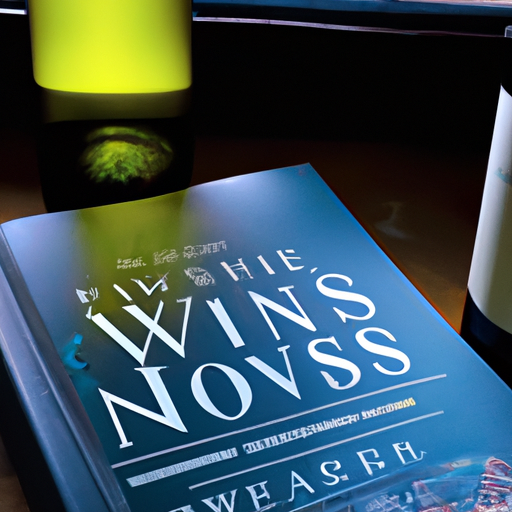
Exploring the Emerging Wine Regions: A Look at the Latest Trends
Exploring the Emerging Wine Regions: A Look at the Latest Trends
As the world of wine continues to evolve, new and exciting regions are emerging as players in the global wine industry. These up-and-coming wine regions are often characterized by their unique terroir and innovative winemaking techniques. In this edition of Weekly Wine News, we take a closer look at some of the latest trends in these emerging wine regions.
One of the most notable trends in these emerging wine regions is the focus on sustainability and organic practices. Many winemakers in these regions are committed to producing wines that are not only delicious but also environmentally friendly. From using organic and biodynamic farming methods to implementing sustainable winery practices, these winemakers are leading the way in creating a more sustainable future for the wine industry.
Another trend that is gaining traction in these emerging wine regions is the use of indigenous grape varieties. While many wine regions around the world rely on well-known grape varieties such as Cabernet Sauvignon and Chardonnay, these emerging regions are embracing their unique local grape varieties. This not only sets them apart from more established wine regions but also allows them to showcase the distinct flavors and characteristics of their terroir.
In addition to sustainability and indigenous grape varieties, these emerging wine regions are also experimenting with new winemaking techniques. From natural winemaking to extended maceration, winemakers in these regions are pushing the boundaries of traditional winemaking practices. This experimentation not only allows them to create wines that are truly unique but also helps to further establish their region as a leader in the wine industry.
One such emerging wine region that is making waves in the industry is the Finger Lakes region in New York. Known for its cool climate and unique soil composition, the Finger Lakes region is producing some exceptional Rieslings. Winemakers in this region are also experimenting with other cool-climate grape varieties such as Gewürztraminer and Pinot Noir, further solidifying the region’s reputation as a producer of high-quality wines.
Moving across the globe, another emerging wine region that is worth mentioning is the Bekaa Valley in Lebanon. Despite its turbulent history, the Bekaa Valley has been gaining recognition for its exceptional wines. With its high altitude and Mediterranean climate, the region is well-suited for growing a variety of grape varieties. From elegant reds made from Cabernet Sauvignon and Syrah to aromatic whites made from Viognier and Sauvignon Blanc, the wines from the Bekaa Valley are garnering attention from wine enthusiasts around the world.
In conclusion, the world of wine is constantly evolving, and emerging wine regions are at the forefront of this evolution. With a focus on sustainability, indigenous grape varieties, and innovative winemaking techniques, these regions are carving out a niche for themselves in the global wine industry. Whether it’s the Finger Lakes region in New York or the Bekaa Valley in Lebanon, these emerging wine regions are producing wines that are not only delicious but also reflective of their unique terroir. As wine enthusiasts, it’s exciting to see these regions flourish and contribute to the ever-expanding world of wine.
Unveiling the Art of Wine Tasting: Tips and Tricks for Beginners

Wine tasting is an art that has been practiced for centuries. It involves using your senses to evaluate and appreciate the different flavors, aromas, and textures of wine. Whether you are a beginner or a seasoned wine enthusiast, there are always new tips and tricks to learn to enhance your wine tasting experience.
One of the first things to consider when tasting wine is the temperature at which it is served. White wines are typically served chilled, while red wines are served at room temperature. This is because the temperature can greatly affect the flavors and aromas of the wine. Serving a white wine too cold can mask its flavors, while serving a red wine too warm can make it taste overly alcoholic. It is important to find the right balance to fully appreciate the wine.
Another important aspect of wine tasting is the glassware. The shape and size of the glass can greatly impact the way the wine smells and tastes. For example, a tulip-shaped glass is ideal for red wines as it allows the aromas to concentrate at the top, while a narrower glass is better for white wines as it helps to preserve the delicate aromas. It is also important to hold the glass by the stem to avoid warming the wine with your hands.
When it comes to actually tasting the wine, there are a few steps to follow. The first step is to visually examine the wine. Look at the color and clarity of the wine. A white wine should be clear and bright, while a red wine should have depth and richness in color. Swirl the wine gently in the glass to release its aromas.
Next, it is time to smell the wine. Take a moment to inhale the aromas and try to identify different scents. Is it fruity, floral, or earthy? This step can be quite subjective, as everyone’s sense of smell is different. Don’t be afraid to take your time and really explore the aromas.
Finally, it is time to taste the wine. Take a small sip and let it coat your entire mouth. Pay attention to the flavors and textures. Is it sweet, dry, or acidic? Does it have a smooth or rough texture? Take note of any lingering aftertastes. It can be helpful to compare the wine to other wines you have tasted in the past to better understand its characteristics.
As you continue to explore the world of wine tasting, it is important to keep an open mind and be willing to try new things. Attend wine tastings, read books and articles, and talk to experts in the field. The more you learn, the more you will appreciate the nuances of different wines.
In conclusion, wine tasting is a skill that can be developed and refined over time. By paying attention to the temperature, glassware, and following the steps of visually examining, smelling, and tasting the wine, you can enhance your wine tasting experience. Remember to keep an open mind and continue to learn and explore the world of wine. Cheers!
The Rise of Organic and Biodynamic Wines: Understanding the Sustainable Wine Movement
The wine industry has seen a significant shift in recent years towards organic and biodynamic wines. As consumers become more conscious of their environmental impact and seek out sustainable products, winemakers have responded by adopting organic and biodynamic practices in their vineyards and wineries. This rise in popularity can be attributed to a growing understanding of the benefits of sustainable wine production.
Organic wines are made from grapes that have been grown without the use of synthetic pesticides, herbicides, or fertilizers. Instead, winemakers rely on natural methods to control pests and weeds, such as introducing beneficial insects or using cover crops. This approach not only reduces the amount of harmful chemicals in the environment but also promotes biodiversity in the vineyard.
Biodynamic wines take organic farming a step further by incorporating holistic practices that view the vineyard as a self-sustaining ecosystem. Biodynamic farmers follow a strict set of principles outlined by the Demeter Association, which includes using specific preparations made from natural materials to enhance soil fertility and plant health. These preparations are often applied according to the lunar calendar, which is believed to influence the growth and development of the vines.
One of the main reasons for the rise in popularity of organic and biodynamic wines is the increasing demand for sustainable products. Consumers are becoming more aware of the impact their choices have on the environment and are actively seeking out products that align with their values. By choosing organic and biodynamic wines, consumers can support winemakers who are committed to reducing their environmental footprint and preserving the health of the land.
Another factor contributing to the growth of the sustainable wine movement is the improved quality of organic and biodynamic wines. In the past, there was a perception that organic wines were of lower quality compared to conventionally produced wines. However, advancements in organic and biodynamic farming practices have led to significant improvements in the taste and complexity of these wines. Many winemakers now believe that sustainable practices actually enhance the expression of terroir, resulting in wines that are more reflective of their unique growing conditions.
Winemakers are also recognizing the economic benefits of adopting sustainable practices. By reducing their reliance on synthetic inputs, they can lower their production costs and increase their profit margins. Additionally, the growing demand for organic and biodynamic wines presents an opportunity for winemakers to differentiate themselves in a crowded market. By offering wines that are not only delicious but also environmentally friendly, winemakers can attract a new segment of consumers who are willing to pay a premium for sustainable products.
In conclusion, the rise of organic and biodynamic wines can be attributed to a growing understanding of the benefits of sustainable wine production. Consumers are increasingly seeking out products that align with their values and are willing to pay a premium for wines that are environmentally friendly. Winemakers, in turn, are recognizing the economic and quality benefits of adopting organic and biodynamic practices. As the sustainable wine movement continues to gain momentum, it is likely that we will see even more winemakers embracing these practices and producing wines that are not only delicious but also good for the planet.






